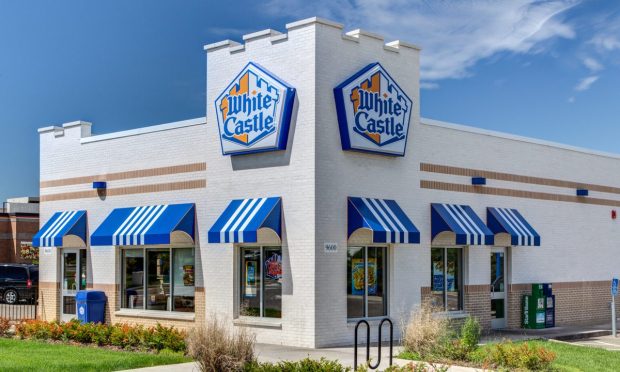
With quick-service restaurants (QSRs) weighing the advantages and disadvantages of relying on third-party aggregators, White Castle is leveraging Uber’s white-label platform, Uber Direct, for delivery driver labor.
The burger chain, which has more than 350 locations, announced Thursday (Sept. 21) that it is adding delivery through its app to drive direct delivery orders, giving the restaurant more access to consumer data and more ability to market to them and drive loyalty, while using Uber Direct to avoid the cost of building out its own fulfillment infrastructure from scratch.
“The White Castle app has delivered cravings and savings for customers since it first launched,” Jamie Richardson, the restaurant’s vice president of marketing and public relations, said in a statement. “The addition of delivery in the app truly makes this a one-stop shop for anyone looking to satisfy their hankering for that one-of-a-kind taste.”
The restaurant chain has already had a presence on third-party apps. With this addition, the brand can build more relationships with its customers and pay a lower per-order cost to Uber, skipping the marketplace commission.
The move comes as restaurants choose how and when to use aggregator’s offerings. As White Castle leverages direct ordering with Uber’s driver labor, QSR behemoth Domino’s Pizza, which has more than 20,000 locations around the world, is taking a different tack, making its listing available on Uber Eats’ marketplace but fulfilling orders with its own drivers, to avoid paying Uber for the labor when it already has its own fulfillment network.
Overall, direct ordering is more popular among consumers than using a third-party aggregator, according to PYMNTS Intelligence. Additional research for the study “Connected Dining: The Robot Will Take Your Order Now” revealed that 14.3% had placed their most recent order online through a restaurant’s app or website — more than three times the 4.7% that had placed theirs through a third-party aggregator.
Currently, many restaurants are facing difficulties with their delivery businesses, as ongoing economic challenges prompt many consumers to shift to lower-cost channels or to cut back on restaurant dining altogether.
According to the study “Connected Dining: Rising Costs Push Consumers Toward Pickup,” 48% of consumers reported that they have been more likely to pick up their restaurant orders themselves rather than have them delivered due to inflation.
Plus, additional PYMNTS Intelligence from the Connected Dining series revealed that 70% to 79% of restaurant customers who have noticed menu price inflation (depending on the generation) have been eating at home more often in response to these increases, skipping out on restaurant meals in favor of more budget-friendly options.
By tapping all the options at their disposal — such as offering more fulfillment channels through their own digital platforms and making their brands available via third-party marketplaces — restaurants are better able to combat these decreases, meeting consumers’ demand to be able to access their restaurant meals how they want them, when they want them.